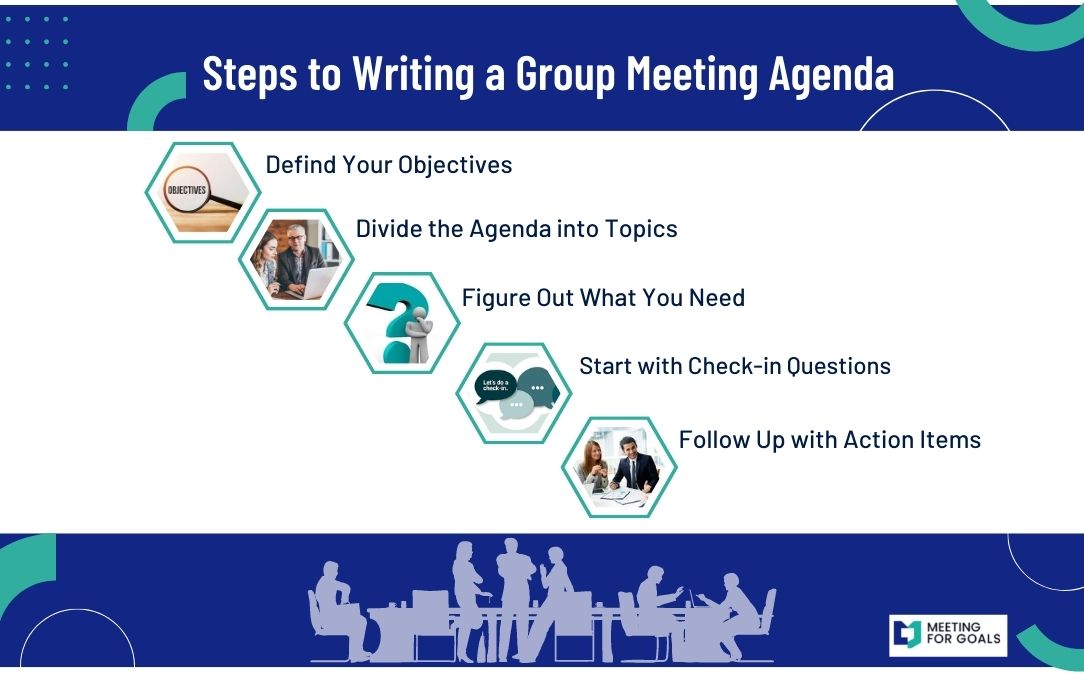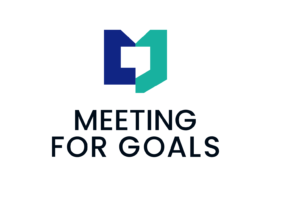
How To Reduce Meetings in the Workplace
Introduction Every manager has been in a meeting that went on way too long, or spent too much time discussing things that could have been

Before you schedule your next meeting, outline your expectations with a team meeting agenda. A meeting agenda keeps the meeting focused, addresses important topics and ensures that you don’t forget anything. Give your employees the same outline so they can take notes and refer back to the agenda as needed. We have many free meeting agenda templates you can get.
Team meetings are infamously boring. With a great agenda, you’ll hold your employees’ attention while covering the objectives. Everyone walks away feeling like they learned something–and they’ll look forward to future meetings. Here’s how to write a great business team meeting agenda.
According to the agenda definition, an agenda can be a list of topics or minutes for a meeting. Follow these steps to write a dynamic agenda that’s more than a list of topics.
Before you start, choose the topic for this group meeting. What do you want to accomplish? Maybe you want to talk about sales, highlight project results, reflect on the past year, brainstorm new ideas, review everyone’s progress or talk about obstacles. Your meeting could cover multiple topics at once as long as you keep it focused and organized.
Afterward, write a brief overview of your objectives. You don’t have to go into detail, but start the meeting with an overview so your employees know what to expect. This keeps the meeting focused and helps your employees get ready to participate. If you have a loose objective, ask your employees what they want to take away from this meeting.
When you deliver your objectives, get right to the point. A good meeting makes the most of your employees’ time so they don’t miss out on precious working hours. Clearly defining your objectives also keeps your employees focused-if they don’t know what to expect, their minds will wander.
Next, figure out what you need from employees. For example, do you want everyone to talk about their projects during the meeting? Do you want a specific employee to talk about their sales for the week? Add this information to your team meeting agenda template, and set aside time for every presentation.
Next, tell your employees ahead of time so they have time to prepare. Don’t surprise your employees by calling on them in the middle of the meeting–they won’t know what to say. Instead, send them the agenda and outline your expectations. You can use a software like Meetingforgoals to help you prepare and send out an agenda ahead of time.
Add a time limit to your group meeting agenda. Some presentations get long-winded, so you’ll need to know when to wrap it up and move onto the next objective. You’ll see your employees checking the clock if the meeting goes on longer than planned.
When you read an article online, you expect the author to divide each topic into different sections. An undivided block of text is practically unreadable. Similarly, when you write your meeting agenda, divide the agenda into topics so you don’t overwhelm your employees with too much information at once.
For example, if you’re reviewing the last quarter, you could divide the agenda into the following subjects:
With their agenda in front of them, your employees can follow along and address each topic as it comes up.
Engage your employees right away by starting the meeting with a question. Everyone loves talking about themselves, and you’ll be able to share ideas, build relationships and learn from each other. If you want to keep the meeting business-oriented, here’s a few questions you could start with:
If you want to keep the meeting light and conversational, start with a casual question. Try to avoid the standard “How was your weekend?” questions–everyone tunes those out. At the same time, avoid controversial topics that might cause an argument. Here’s a few questions that will get people talking:
Start by answering the morning meeting question yourself so your team learns about you and no one feels like you’ve thrusted them in the spotlight. This is true for skip level meetings as well as meetings with your peers.
Once you’ve outlined your objectives, discuss what you’re going to do about it. Add a list of action items to your agenda. These action items can be easily assigned to someone and a due date given during the meeting. This could involve distributing tasks to employees, setting new performance goals, completing training, reaching out to vendors or preparing reports for the team.
At the end of meeting, you could add new action items once you figure out what your employees need. You could also leave the list of action items blank and add them to the agenda when you know how to proceed. Just make sure you give your employees concrete solutions.
At the very least, preparing a good meeting agenda partially ensures that the meeting is productive, provided the other aspects of the meeting hold water. If you are looking for productivity tips then here is a great productivity handbook.
Despite the advantages of having a good meeting agenda, it is one of the most ignored aspects of conducting meetings in the professional context.
Before we move into the nuts and bolts of preparing meeting agendas, let us look at why it is essential, and as the organizer, you should care about them.
While the requirements of meeting agendas are subjective in that each team has its priorities, there are a few key elements that are common denominators to most meetings.
Use tools to help guide you. You can easily schedule and manage your meetings using a super calendar such as the Routine calendar app. You can also easily create your meeting agenda using Meeting For Goals.
Check out these meeting agenda templates that you can get for free!
While the ingredients of an excellent meeting agenda are straightforward, implementing some of these best practices will make this recipe a success.
When creating a meeting agenda, you must take input from other stakeholders to include all the critical topics that are feasible and necessary for that meeting.
Only invite people who can contribute and those who are necessary for the meeting instead of making a general invitation to the team. A vetted group will make the meeting more productive and effective.
A meeting should be goal-oriented, and that becomes easier when the agenda of the meeting is framed as answer discovery for essential questions. For example, instead of “Decide on a brand color,” it could be framed as “What color would best represent our brand?”
Every meeting topic will have its resolution or type. Some topics will entail sharing information, some for seeking input on a decision, and others might be making a decision. Whatever the resolution type, it is important to set this ahead of the meeting.
One of the most critical responsibilities of the organizer is to estimate and allocate time for topics. This is done to ensure that the meeting doesn’t overshoot and the attendees don’t end up spending a lot of time on something that might not be worth it.
Telling how people can prepare for a meeting will alleviate unnecessary stress of preparation and make for better/more productive meetings.
Try to share documents they can review, tests they can take, colleagues they need to talk to, etc.
To make a topic or resolution action, it would help to assign someone from the attendee list the point of contact (POC) for that topic so that people know who to reach out to for clarifications or follow-up.
There you have it, How to write a great team meeting agenda! With these tips you are sure to improve your meetings and make them more productive. Prepare your first meeting agenda and send it to your team members by signing up for free here!

Meetingforgoals helps teams eliminate useless meetings that do not advance the company goals. Our software helps you align meetings to company goals, to have a meeting agenda, allocate action & responsibility and save time. Never have a bad meeting again 💪

Introduction Every manager has been in a meeting that went on way too long, or spent too much time discussing things that could have been

Introduction Meetings are an essential part of every company’s life, but they can also be a huge waste of time. The good news: with some

Introduction Meetings are an essential component of running a successful business. They help you share information, solve problems, and give everyone on your team an